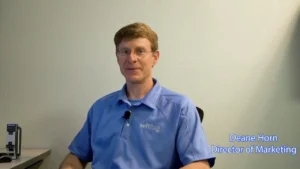Trends in Automation and Workforce – Manufacturing’s Job Crisis
Historically, there’s been a careful balance between automation and human labor in the workforce. Automation has the potential to vault productivity forward, but it also has the potential to eliminate jobs. With packaging automation, companies have to walk a very delicate line in bringing new automation to eliminate the truly demanding jobs.
On this episode of Case By Case, a podcast by Schneider Packaging, host Courtney Echerd talked with Matt Reynolds, Chief Editor at Packaging World, the flagship title of PMMI Media Group, founded in 1994 and the world’s best-read publication for professionals who use, recommend and purchase packaging equipment, materials and services.
The duo dug into automation, pandemic jobs losses and how brands involved in automation often have to convince their workers that automation will make their lives easier.
“The short answer is redistribution of labor,” Reynolds said on how to make automation work and keep jobs. “Away from the mundane, the most repetitive, the least ergonomically friendly, and the most prone to danger or injury, and toward more mentally stimulating positions.”
The tension between labor and automation was born out of an era when work was everywhere, according to Reynolds. Currently, that’s not the case, especially in the last 10 years and with challenges heightened by the pandemic.
A May report from Deloitte and the Manufacturing Institute showed that the pandemic erased 1.4 million U.S. manufacturing jobs. By the end of 2020, 820,000 of those jobs had been recouped, but the remaining had not, despite half a million job openings.
“That’s after it took us six years to claw back 600,000 jobs,” Reynolds said. “So, one step forward, two steps back.”
Follow us on social media for the latest updates in B2B!
Twitter – @MarketScale
Facebook – facebook.com/marketscale
LinkedIn – linkedin.com/company/marketscale









